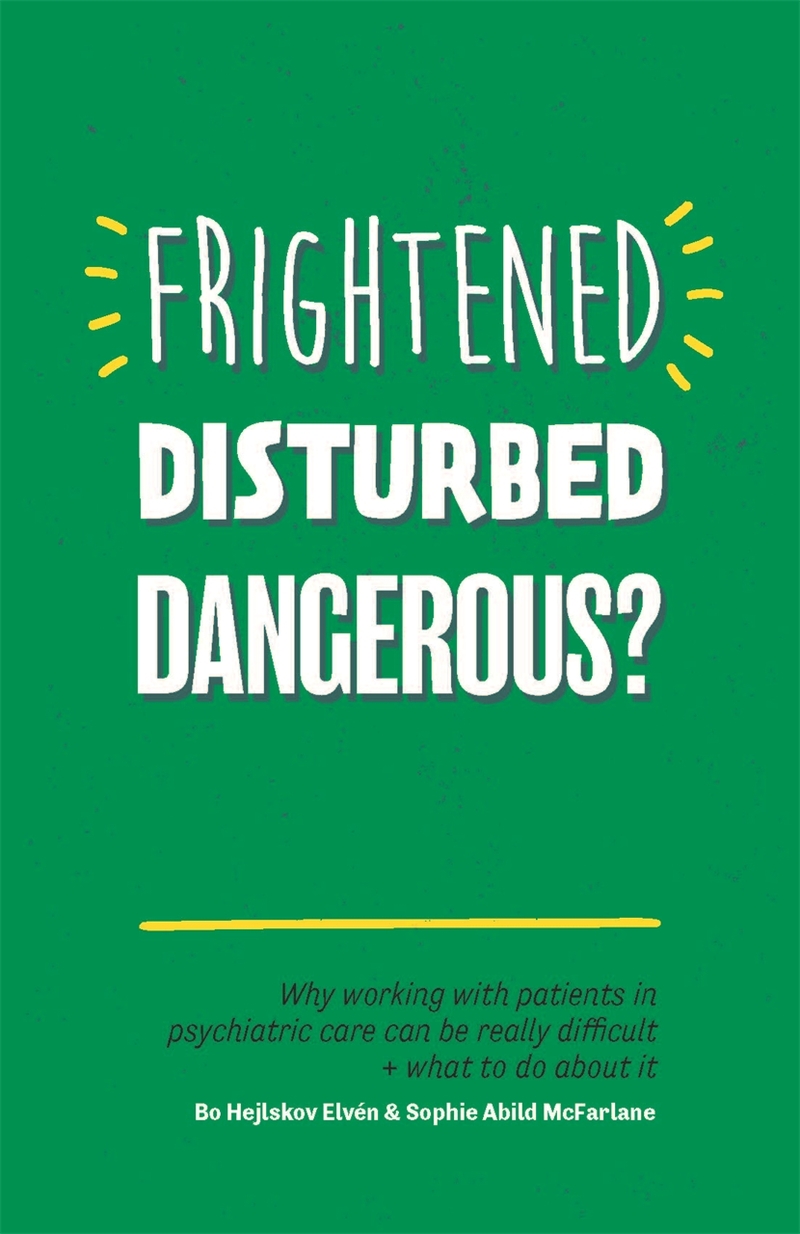Bo Hejlskov Elvén is a Clinical Psychologist, and author of Frightened, Disturbed, Dangerous?, Disruptive, Stubborn, Out of Control?, Confused, Angry, Anxious? and Sulky, Rowdy, Rude?, based in Sweden. He is an independent consultant and lecturer on autism and challenging behaviour, and an accredited Studio III trainer. In 2009, he was awarded the Puzzle Piece of the Year prize by the Swedish Autism Society for his lecturing and counselling on challenging behaviour.
Frightened, Disturbed, Dangerous? Those words are often used to describe people in psychiatric care. Historically, schizophrenia is one of our oldest diagnoses still in use. Our oldest diagnoses describe people whose behaviour was unpredictable and clearly different than that of other people. Today, we still see descriptions of people with psychiatric conditions described as disturbed and dangerous despite all the knowledge we have contradicting those descriptions. The words we use to describe people affect the way we think about them and our methods for working with them. If we believe that a person is dangerous, we will keep our distance and even react faster to the person’s behaviour. We are also more prone to react with force.
When I started out as a neuropsychologist, I believed that if I could only describe my patient’s disabilities to staff and other people who met them in everyday life we would all act more humanely towards them. My thought was that if we clearly understand a person’s abilities and disabilities we would automatically be empathetic towards her/him. I did my best to describe the patients in my assessments in a way that would create empathy towards the person in everyone that read the reports.
Over the last twenty years, we have come a long way in increasing empathy for people with autism in society; maybe by better descriptions of autism and great books written by people with autism about their lives. But we don’t see the same increase in empathy towards people with schizophrenia or personality disorders.
Maybe the reason for this is fear. People’s fear and anxiety sometimes override their ability to feel and show empathy. We fear what we do not understand, and we psychologists have not been as good in describing schizophrenia and personality disorders as we have autism. Most people still believe that the behaviour from people with schizophrenia or personality disorders is unpredictable, and media reports often link psychiatric disorders to crimes. Despite the fact that people with psychiatric conditions as a group are not more violent than any other group in society, people are afraid of them. This makes the job of increasing empathy towards people with psychiatric conditions difficult. We need the empathy. When staff feel empathy towards the people they work, the use of force decreases and treatment becomes more efficient. When empathy towards the group increases in society, life possibilities for them increase. People with schizophrenia and personality disorders need that, and society needs that.
After some years as a psychologist, I became less optimistic about people’s inane humanism. I realised that increasing staff empathy might not be enough, so I started to look at how staff with high empathy worked compared to staff who were afraid of the people they worked with. My thought was that if we can tell staff how they should work, we can make positive changes for people with psychiatric conditions despite low staff empathy.
I started out by talking about what staff should not do. We should not use restraints, neither physical restraints nor the Swedish belt. We should not tell people off or use any kind of force. I was told by staff that it was necessary. I started looking for other ways of working and came upon Andy McDonnell and his work on physical interventions. From there, my work on de-escalation theory and techniques developed further and today we can work in both psychiatric care, dementia care and disability care without using force or restraints.
I am very happy that we have come as far as we have. Mostly because during the years we have developed a method to avoid the use of force my daughter Sophie grew up developing symptoms of both disability and a psychiatric disorder. She is now 30 years old and her experience of psychiatric care formed the base of the book Frightened, disturbed, dangerous? Her case stories illustrate the principles of low arousal approaches, both the good situations but unfortunately mostly the situations where staff did not show empathy. We hope that our combined effort in writing the book will enhance both proper method in psychiatric care and staff empathy.
If you would like to read more articles like Bo’s and hear the latest news and offers on our Social Work and Mental Health books, why not join our mailing list? We can send information by email or post as you prefer, and please also tell us about your areas of interest so we can send the most relevant information. You can unsubscribe at any time.
